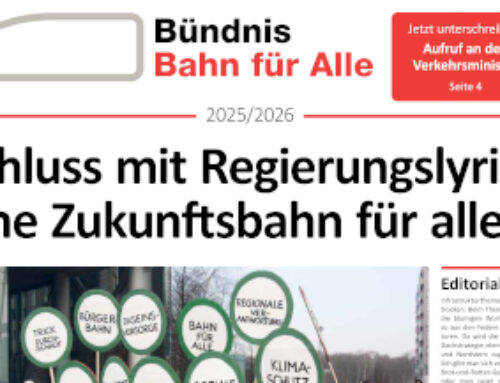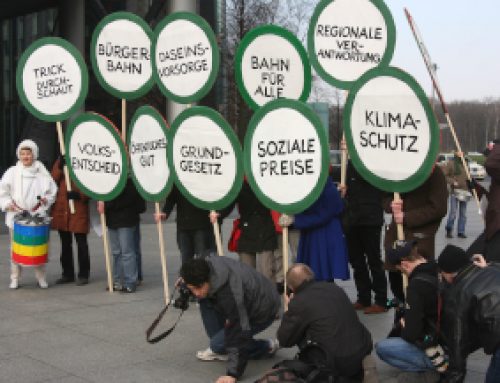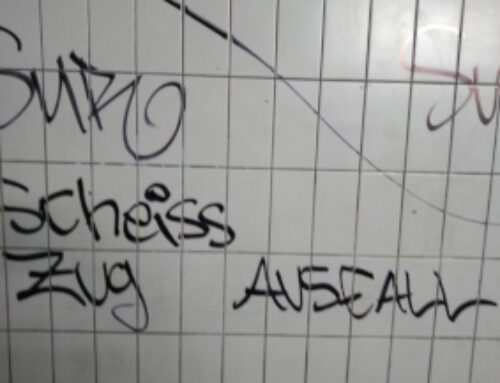10 May 2021
OPEN LETTER FROM 36 ENVIRONMENTAL GROUPS TO EU TRANSPORT MINISTERS
AHEAD OF THE TRANSPORT COUNCIL OF 3 JUNE 2021
Re: Shifting international passenger trips to rail: Delivering on the European Year of Rail 2021
Dear Transport Ministers,
As a transport minister, you will soon be joining your counterparts from across Europe at an EU Transport Council on 3 June to discuss the future of rail travel. The European Year of Rail 2021 is a unique opportunity for the EU and national governments to boost international passenger rail in Europe.
The European Environment Agency has described rail as the most sustainable mode of motorised passenger transport. We call on you to make trains the obvious travel choice for people in Europe: Europe needs an attractive and dense network of international long-distance train services, including frequent day-time services as well as night trains that cover larger distances.
Polling shows that people in Europe are willing to shift from air to rail – even for international travel. It’s your responsibility to make change happen. EU citizens demand attractive connections, convenient travel times, fair prices, easy booking options and protected passenger rights. This requires fair market conditions for rail compared to airlines and road travel.
In its interim report, the International Passenger Rail platform identifies many challenges in customer experience and digitalisation, services, infrastructure and the regulatory framework. Yet, we see important gaps (e.g. no mention of a level playing field across different modes of transport) and no concrete response.
To make the European Year of Rail a success, European governments should discuss and endorse the following measures at the Transport Council meeting [More detail on the measures in the Annex.]:
- Commit to at least 30 new Europe Express lines and night trains between 2021 and 2025, and short-term service improvements, towards a European timetable
- Launch a funding programme for interoperable rolling stock and sleeping carriers
- Make sharing of real-time and ticketing data mandatory for rail operators
- Reduce track access charges for international trains and phase-out flight subsidies and short-haul flights
- Increase public investment in closing infrastructure gaps and modernising existing infrastructure
Without concerted and resolute political action, the European Year of Rail will do little to revive the fortunes of trains in Europe, just at the time when we need them most. After years of neglect it is time to invest in an industry with a bright future.
Yours sincerely,
2Celsius
Back on Track
Bahn für Alle
Bond Beter Leefmilieu (BBL)
Center for Transport and Energy (CDE)
Center za trajnostni razvoj podeželja Kranj – Center for Sustainable Rural Development Kranj
Civil Affairs Institute
Clean Air Action Group (Levego)
Collectif Oui au train de nuit
Council for Sustainable Transport
Ecocity
Ecodes
Ecologistas en accion
Eco-union
Fahrgastverband Pro Bahn
Focus
Germanwatch
Greenpeace
Green Transition Denmark
Institute for Political Ecology
Inter-Environnement Wallonie (IEW)
KolejDEPL
Legambiente
Ljubljanska kolesarska mreža – Ljubljana cycling network
Natuur&Milieu
Odraz
ProKolej
Promoció del Transport Públic (PTP=
RAC France
Savez za Zeljeznicu – Pro Rail Alliance (SZZ)
Stay Grounded
Transport Exclusion Association
Transport&Environment
Verkehrsclub Deutschland (VCD)
Verkehrsclub Österreich (VCÖ)
Zelena Akcija
ANNEX
1) Commit to 30 new Europe Express lines and night trains between 2021 and 2025, and short-term service improvements, towards a European timetable
Starting in 2021:
● Governments should commit to 30 new international day-time or night train lines on existing infrastructure as well as short-term improvements in frequency and travel time for existing lines, to be implemented between 2021 and 2025.
● Governments should also set up a working group for a “Europatakt”, a European timetable with trains and connections at regular intervals, assisted by the European Railway Agency, infrastructure managers and rail operators, which would also develop a timetable vision for 2030 and the foundations of a permanent European body to coordinate the network.
● Public support must be made available for those stretches of lines that are not financially viable, either with cross-border Public Service Obligations or seed funding.
Why?
Attractive rail connections are missing between many major European cities, with either no service or too many changes or insufficient frequency. While the Trans Europ Express 2.0 initiative focuses on a few lines and does not guarantee that they will actually be operated, the European Commission plans only 15 pilot projects only by 2030. A common vision for a comprehensive European network of day-time and night trains will make capacity planning easier and help to identify service gaps.
2) Launch a funding programme for interoperable rolling stock and sleeping carriers
Starting in 2021:
Governments shall task the Commission with launching a funding programme for a pool of interoperable rolling stock and sleeping carriers. The phase-out of air travel subsidies and recovery funds can provide resources.
Why?
Equipping rolling stock for international lines with various safety and signalling systems increases costs by around 40%.The roll-out of the EU-wide signalling and speed control system (ERTMS) and increasing harmonisation will still take decades. The extra costs of interoperable rolling stock and the lack of sleeping carriers, are major obstacles for the development of new lines In addition, such a project will contribute to a green and fair recovery by creating many sustainable jobs.
3) Make sharing of real-time and ticketing data mandatory for rail operators
Starting in 2021:
Governments should task the Commission to develop a rail ticketing regulation that enables passengers to search and book rail tickets across Europe with one click, up to 9-12 months in advance, under the protection of passenger rights for the entire trip.
Why?
Integrating information from different rail operators is technically possible but many rail operators do not share the necessary data and ticket selling rights, and do not sell through-tickets, despite the sector’s promises to address this problem already many years ago.
4) Reduce track access charges for international trains and decrease flights
Starting in 2021:
Governments should make it mandatory for Member States to reduce charges to direct cost levels for international, including night trains. In the meantime, countries should already use the flexibility they have to reduce track access to direct cost levels and cover additional infrastructure costs through their national budgets. Governments should also agree to phase out air travel subsidies and ban cross border and domestic short-haul flights where there is a night train or reasonable day-time connection.
Why?
Many governments charge not only the direct costs of infrastructure use, but also additionally high mark-ups – sometimes specifically for international trains. The longer the distances covered, the higher the costs. EU regulation already gives Member States the flexibility to reduce track access charges, without any need for adjusting EU legislation. Airlines enjoy tax benefits that make travelling by train less attractive. Ten of the twenty busiest European air routes can be connected in less than six hours by train.
5) Increase public investment in closing infrastructure gaps and modernising existing infrastructure
Starting in 2021:
Governments should support an increase of European investment to upgrade rail infrastructure and ask the Commission to report annually on the amount and share of EU transport funding dedicated to rail infrastructure projects. They should also agree to dedicate a higher share of each country’s recovery and cohesion funding to cross-border rail projects and report progress annually to the European Commission.
Why?
Current national and EU budget plans do not provide sufficient financing for rail infrastructure. Electrification, roll-out of ERTMS, increasing capacity on nodes and key corridors, and closing missing links are key to make infrastructure that is fit for a rail renaissance.


